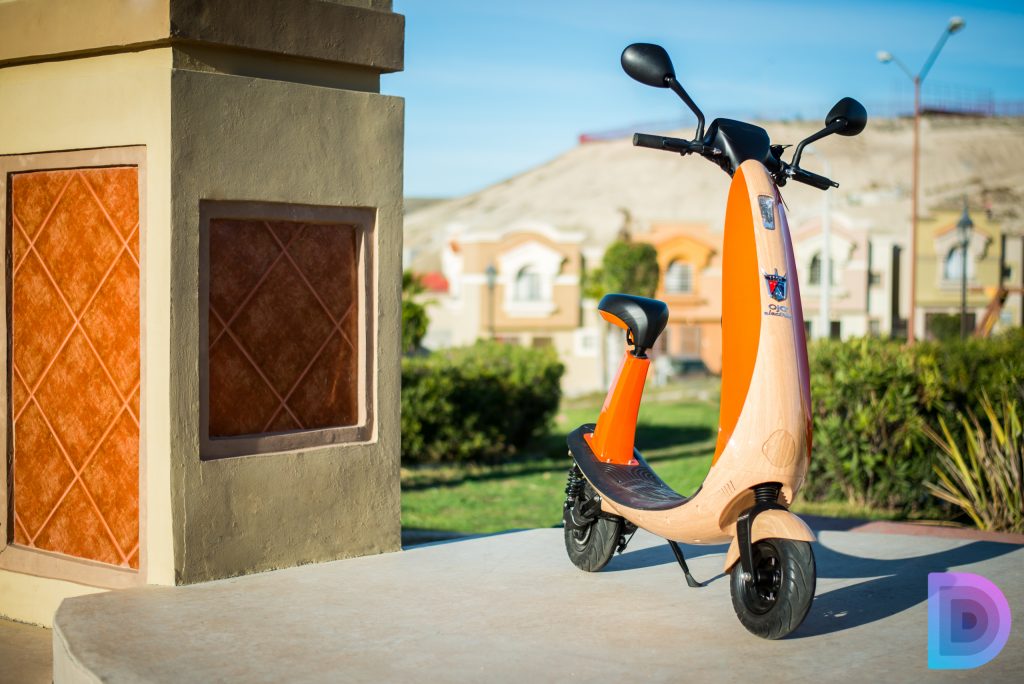
The year was 1903. The city: Detroit. Henry Ford was building what would go on to become one of the largest companies in the world. Ford Motor Company was one of the very few to have survived the great depression and is often credited with the proliferation of four-wheeled vehicles.
It’s been over 100 years, and the industry is currently adapting to new consumer demands and alternative forms of transportation. Ford is dipping its toes into new concepts like electric cars, hybrid tech, plug-in hybrids, and other interesting innovations. Among these is the Ford Ojo commuter scooter, which came out of a licensing partnership with Ojo Electric.
[aa_see_also id=”2945″ post_loc=”curr_site” pre_text=”Editor’s Pick” align=”right”][/aa_see_also]
As the in-house motorcycle enthusiast, I was eager to see what this product had to offer. It’s not quite a motorcycle, but not quite scooter. Nor is it an evolved bicycle. It is a mobility tool of its own, catering to a new market of city dwellers and neighborhood adventurers.
And so I parked my Harley and hopped on this thing with a fresh outlook. Here’s what I found out.

Table of Contents
Design & build quality
The thing has the appearance of a banana — but it is a very good-looking banana. The Ojo Commuter was already one of the most solidly designed electric scooters around, and Ford only managed to improve upon the unique design.
While other electric scooters are small and uncomfortable, the Ford Ojo features a high seat and handlebars that don’t require destroying your back in a crouching position. And if sitting isn’t for you, you can dump the chair and use it as a standing scooter.
In terms of aesthetics, this looks just like a regular Ojo Commuter Scooter. The main differences are that a variety of colors are now available and the Ford branding is stamped all over it (front shield, rear fender sticker, and embroidered seat).
We did get to play with one of the prettiest options. Our model is from the vintage line-up, featuring a wooden and solid orange striped pattern. It is gorgeous, and the shield looks much fancier than the one on the regular Ford Ojo designs.
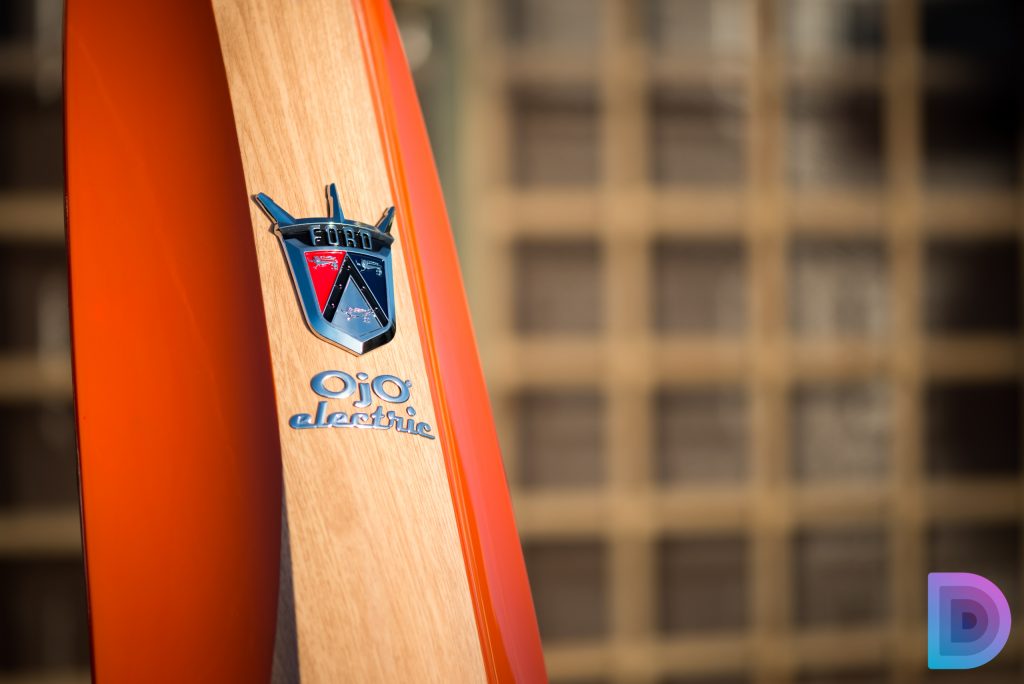
The aluminum frame is solid and the bike can handle up to 300 pounds of weight, but don’t expect this to be your all-American iron pony. The rest of the bike is made of plastic and fiber. It is as good as those materials can get, though. I never felt anything shaking or moving around. It’s surprisingly solid for being the 65-pound, nimble mobility scooter that it is.
The seat is no comfy saddle, but it is actually more pleasant than I thought it would be. Adjusting it to your height is a simple process, thanks to its bike-like mechanism. Once set to my height, I never felt any strain or discomfort, and it is quite plushy. You won’t feel any pain or annoyances if you are sitting on it for as long as the scooter can go — 25 miles. This is only a bit over an hour going full-speed. Nevertheless, if you are using this scooter to travel for longer than 25 miles at a time, you probably have the wrong vehicle.
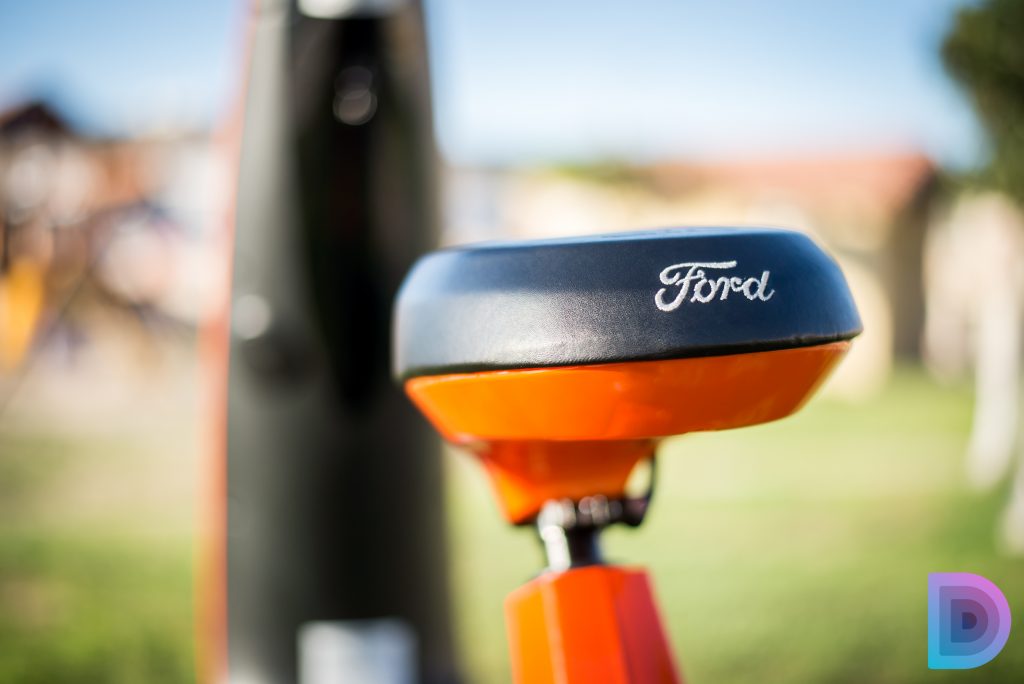
One downside is foot placement. Remember how I mentioned this thing is shaped like a banana? The floor board is too. It’s not a major issue, but it takes a while to get confident with it, as it always feels like your feet are about to slip off to the sides. It is definitely something you can get used to. After all, you are not really using your feet to ride. A solid stand is comforting, but not exactly necessary.
There is one little thing that did annoy me, but maybe I’m being fussy. The charger cover in the front does not follow the wooden pattern around it. It’s actually slanted. This could be something most people won’t notice, but lord knows I just can’t stop staring at it!
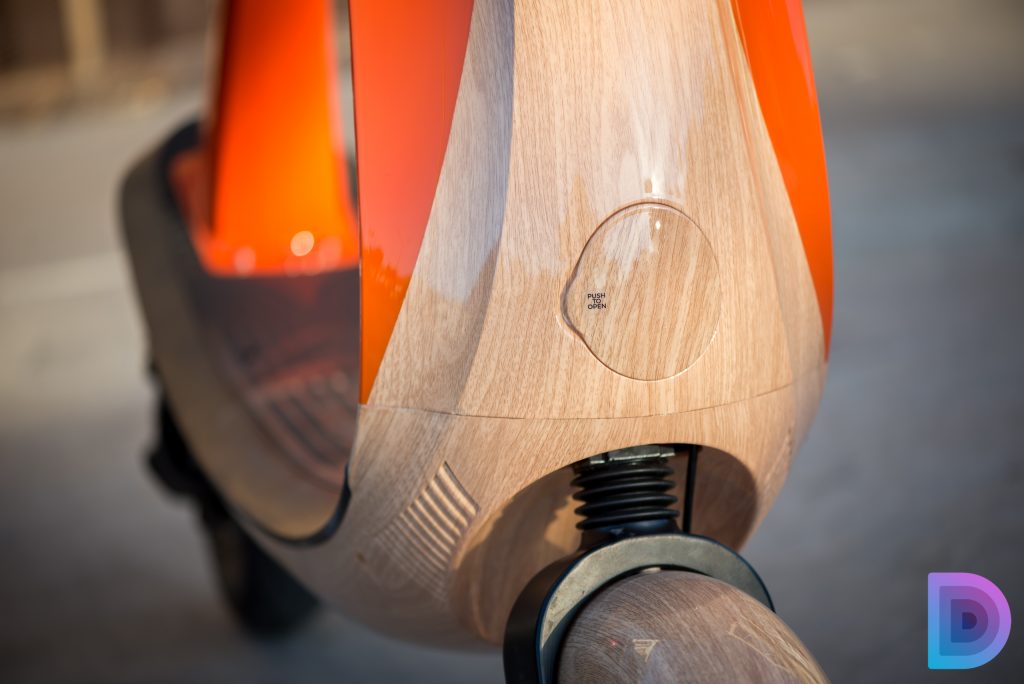
The last thing I have to complain about is the Ford Ojo’s shape and size. No one can deny this thing looks great, but its solid construction and interesting aesthetics are also a cause of one of its biggest downsides. It is hard to carry around in another vehicle, unless you own a truck.
This won’t be an issue if you live in a crowded city and don’t ever need to get out of it, but that is not the case for me (and likely many of you). I live in San Diego county, which spans about 54 miles North to South. It’s about 10 miles from my home to downtown. The most convenient way to use this scooter in San Diego county would be in tandem with a car that can haul it.
I often found that it was too much effort trying to get this thing into my car. Competing electric bikes and scooters are smaller and/or can be folded for better portability.
Yes, the Ford Ojo is much nicer to ride, but it is that much harder to carry around. I would take this into serious consideration when looking for alternative transportation. The Ojo’s shape and size is a serious inconvenience, unless you are planning to ride it all the way to and from your destination. If you need to hop in and out of a car, train or bus, this scooter may not be the right choice.
Bells and whistles
Let’s jump into what makes the Ojo special. It is a full-fledged scooter with features that are hard to find even in serious motorcycles. This is likely why Ford found interest in Ojo, and we wouldn’t blame them. It is one of the coolest products of its kind. Let’s show you why.
Smart key and alarm
The Ford Ojo does not operate with a regular key. Instead, the team has gone with a smart remote key with three buttons. The round one turns the Ojo scooter on and off. The other two are to activate and deactivate the alarm.
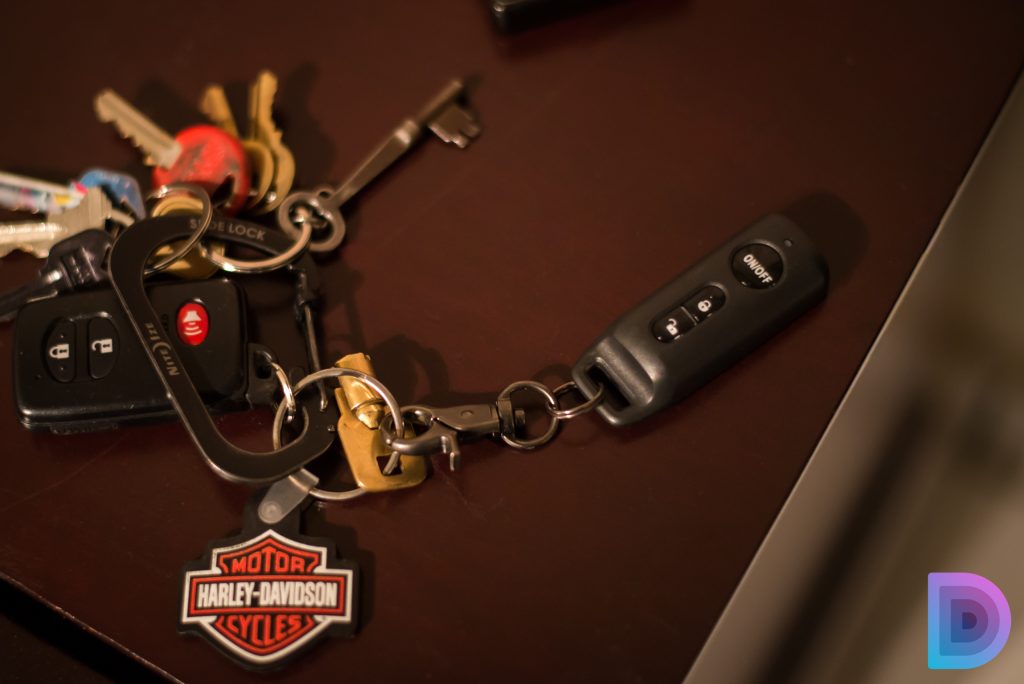
Yes, the thing has an alarm. Let’s face it — this expensive toy will be a breeze to steal. It weighs only 65 pounds and a single person can throw it on the back of a truck with little to no struggle. You need all the help you can get to keep the Ford Ojo safe.
The alarm is activated by motion, and boy is it sensitive. Sometimes the alarm would go off if a motorcycle rode by. Push it just a little bit and a loud siren will go berserk. It might not be able to stop an adamant thief, but at least it will make plenty of noise for you and others around the Ojo to notice something fishy is going on.
Speakers
Motorcycle owners spend hundreds (sometimes thousands) of dollars on good sound systems. Ford Ojo owners won’t have to worry about that; the scooter comes with built-in speakers. These are water-proof and connect to any Bluetooth-enabled music device (phones, tablets, computers, mp3 players, and more).

One thing to keep in mind with moving vehicles is that noise can be very easily dampened. Loud speakers will go silent if you are going 65 mph on the highway, which is why motorcycle sound systems can get expensive; they need to be very loud and clear.
The Ford Ojo zips around at 20 mph and has no rumbling motor. I have been able to enjoy my tunes with no issues. In fact, I used the scooter to play songs during a BBQ and we had no trouble dancing to the music, even with loud drunks around.
Mirrors
Riding this silent and small scooter can get dangerous in traffic, especially considering drivers can be so distracted. You need to be aware of your surroundings, so the addition of side mirrors is definitely welcome.
Can’t tell you too much more about them. They are mirrors! They do their job and are well built.

Lights
Forget about buying those flimsy bike lights. The Ford Ojo comes with integrated LEDs in the front and rear. The rear shows a simple strip in the lower area, which becomes rather visible at night, but I must confess I am not entirely comfortable with it.

I found that when my girlfriend rode the scooter and I finally got to see it from a third-person point of view, the light was noticeable but very low. Drivers are not looking near the ground for lights, which makes us wonder just how safe light placement really is here. We wish it was higher up, where night-time drivers would easily notice it. You can add extra lighting if you wish, though.
And while we were not very satisfied with the rear light, the front LED proved to be quite impressive. It may look tiny at first sight, but it does get very bright and manages to illuminate about 15-20 meters ahead.
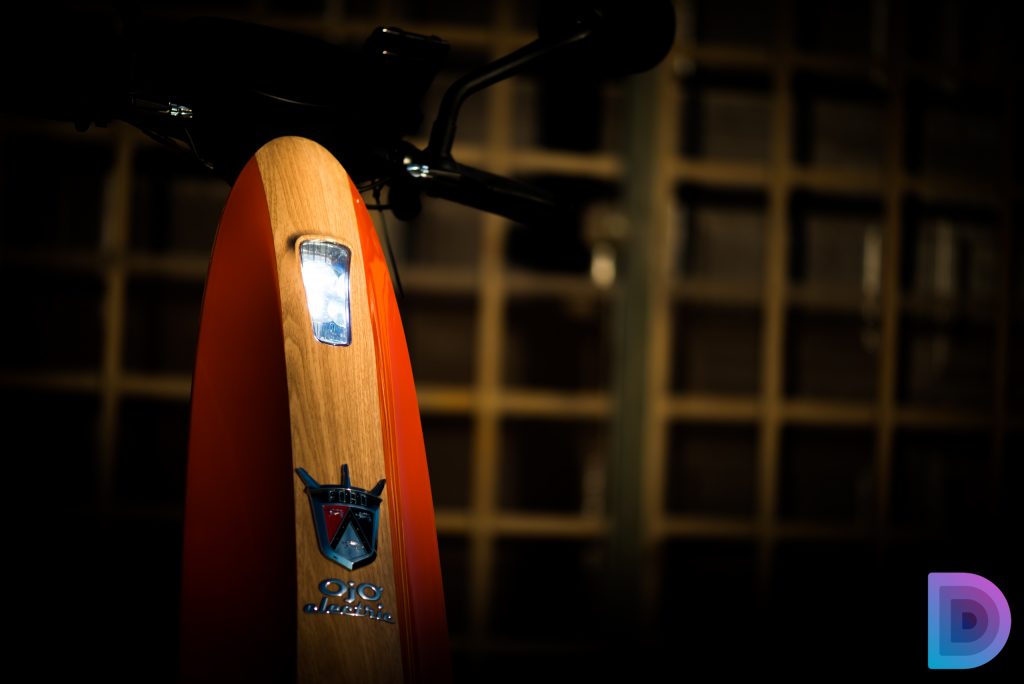
Charging port and phone dock
The Ford Ojo is meant to be a green, smart and connected product. Your smartphone will be an important factor when it comes to tunes and navigation, so the team has added a phone dock to the handle bars.
I have definitely seen better mounts (for motorcycles), but you won’t need much for a scooter like the Ford Ojo. Your phone will be secure enough for 20 mph rides, and it does have the sling band in case the actual mount fails to keep a grip on the phone.
And don’t worry about your phone dying in the middle of your commute. There is a USB port right under the dashboard. All you need is a cable and you can literally charge your smartphone on-the-go. It’s not a slow charger, either. I never got a notification telling me the phone was juicing up slowly.
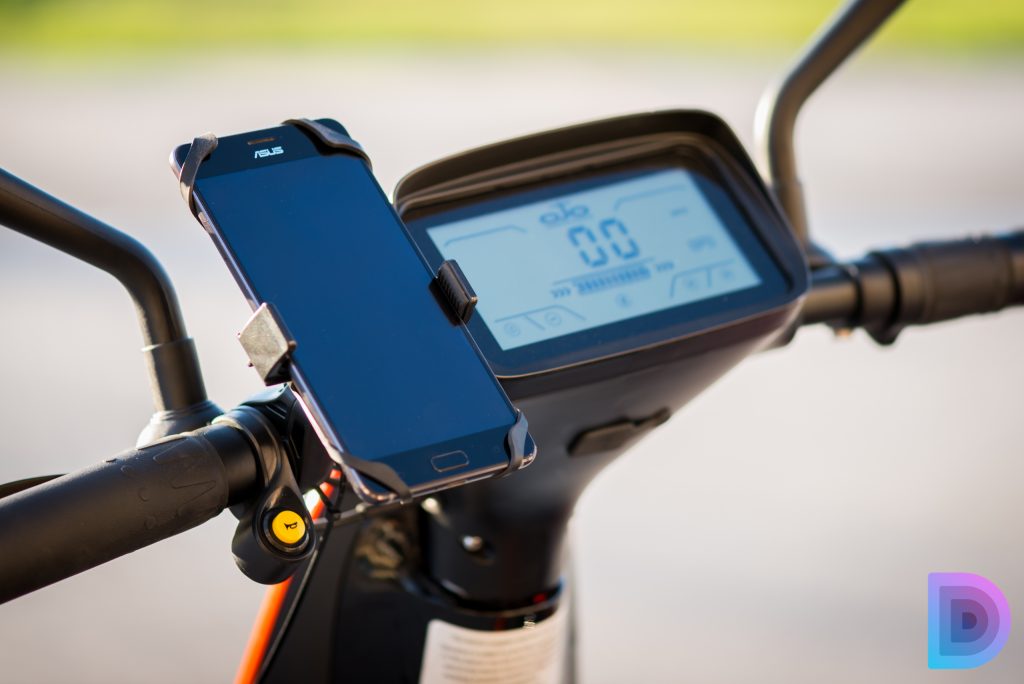
Removable battery
Ojo has the advantage of a removable battery, a feature they are quick to boast about, but we don’t think it is as convenient as they make it out to be. Yes, you can remove the battery, after removing four screws (with an allen wrench) and two covers. This means you can’t exactly enjoy the flexibility of swapping batteries on-the-go. At least not without a few minutes of good ol’ labor.
Performance and handling
This is what it all comes down to — how is the ride? I have mounted all kinds of two-wheeled vehicles, from the cute little Urb-E scooters to sports bikes and 1800cc Harleys. Where does the Ford Ojo stand?
It’s hard to say, mainly because this is meant for such a niche market. I wish it had bigger wheels for more stability, but that would mean going with a more traditional form factor. I wish it was stronger and faster, but then again, that is not what the Ojo is meant for.
This is a whole other monster, and you will feel that as soon as you hop on it for the first time. Body position does not feel like that of a bicycle, traditional scooter, motorcycle, or anything else I’ve tried. Your back is perfectly straight up, which will keep pain and strain away. Your feet are oddly closer to you. The handle bars are too. It’s definitely a comfortable position, but you will need to get used to it, which takes a few rides.
I mentioned I wasn’t too happy with the floor board (or lack thereof). The scooter’s floor is rounded, creating a fall to the sides that makes it feel as if you have no solid footing on the vehicle. This is something else you have to get used to, but eventually you will.

Once you get used to these design quirks, the ride starts getting more pleasant. Simply twist the throttle and the Ford Ojo urges you to get your feet off the ground and start enjoying that breeze in your hair. There are three modes to choose from, which can be controlled from the dashboard. Hit that plus sign all the way up and you will feel the scooter zipping up to 20 mph with no trouble.
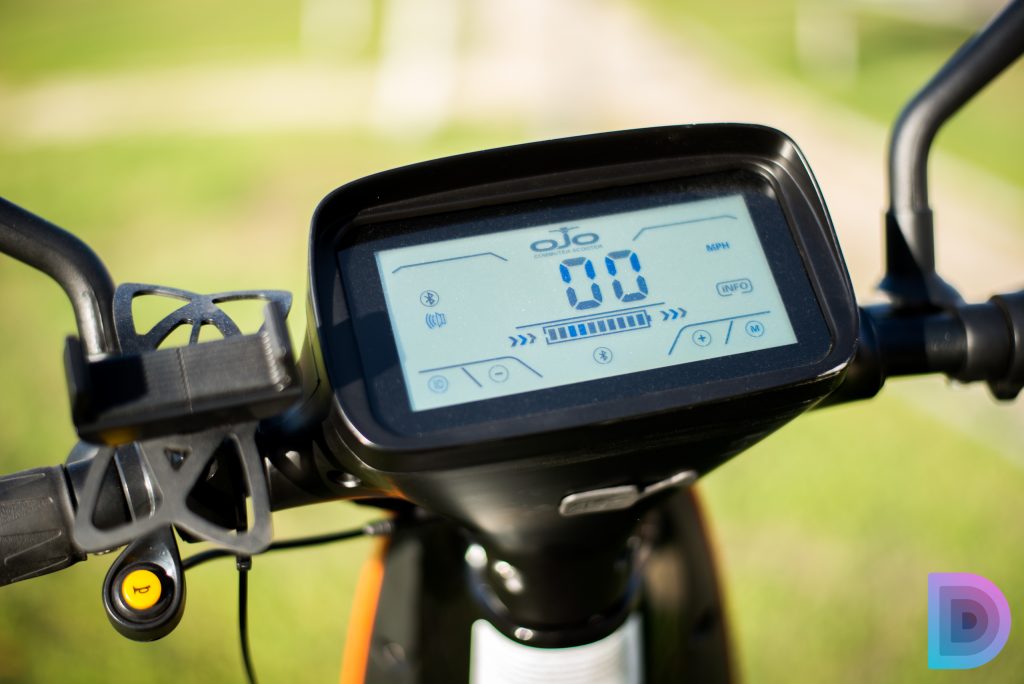
The Ojo soon becomes fun and addictive. This thing feels rather fast, but not fast enough to feel dangerous. I can’t deny I loved the experience. I almost forgot it wasn’t a motorcycle, until a few things quickly brought me back to reality.
This is a very light scooter and the wheel-to-wheel distance is shorter than usual, so turning is something you need to start feeling out before you get too adventurous with leaning. The Ojo will turn quickly, which could throw you off balance due to the smaller tires and low speeds.
It’s all fine and dandy until you hit your first hill. This is one factor you will need to keep in mind. City dwellers from places like San Francisco should probably stick to their stronger engines. This 500 Watt engine is great for flat roads, but it will start lacking in power when going uphill. At one point I was struggling to reach 5 mph on a hill that felt like nothing compared to those in SF.
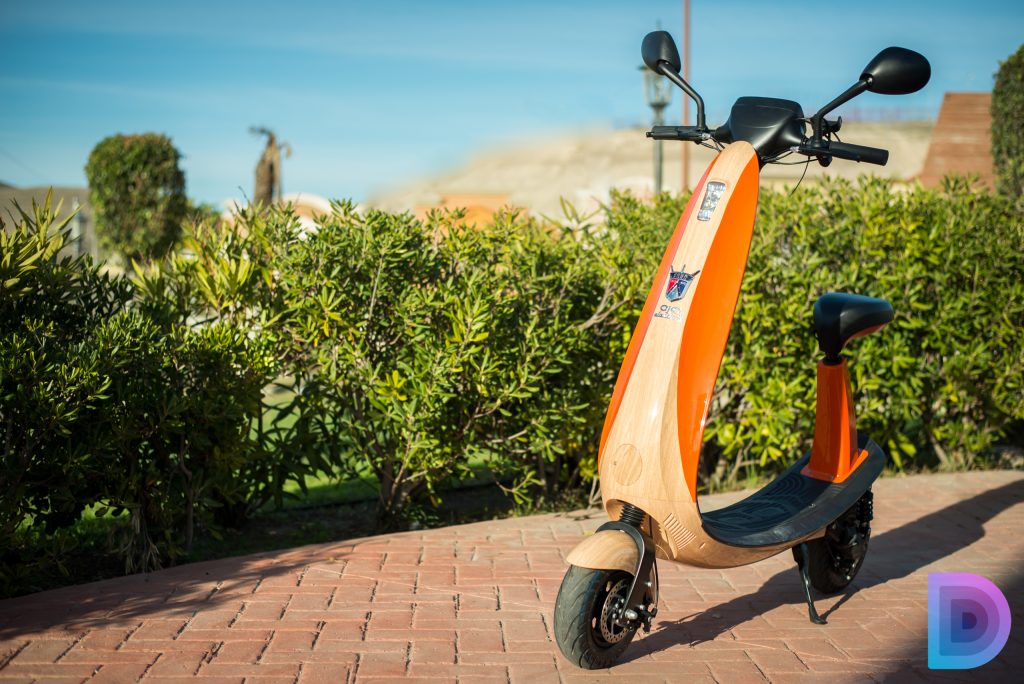
Going downhill is nice, though. The brakes have great stopping power, but I am not sure if Ojo picked the right ones for a vehicle that can travel at 20 mph and carry 300 pounds. The scooter will stop, but you can hear the brakes struggling and screeching. That’s just sound, though. It might be me freaking out over seemingly unpleasant noises. The Ojo never failed to come to a complete stop safely and quickly.
One thing that did surprise me is the suspension. I thought going over speed bumps and harsh roads was going to be a shaky experience, but the front shock and dual rear shocks actually do an amazing job. You will feel the bump (I mean, look at the tiny tires), but it won’t be a rigid blast up your spine.
Range and charging
As for the range, it can go for 25 miles on a single charge. I never quite pushed it as far as I should have. Mostly because I was scared of being left stranded without a way to take this thing back home. It’s not like those foldable scooters you can carry into an Uber or bus.
The charger is very convenient and I could plug it in anywhere, thanks to the retractable cable that plugs into any standard 110 Volt outlet, but that brings us to another issue: this thing is slow to charge.
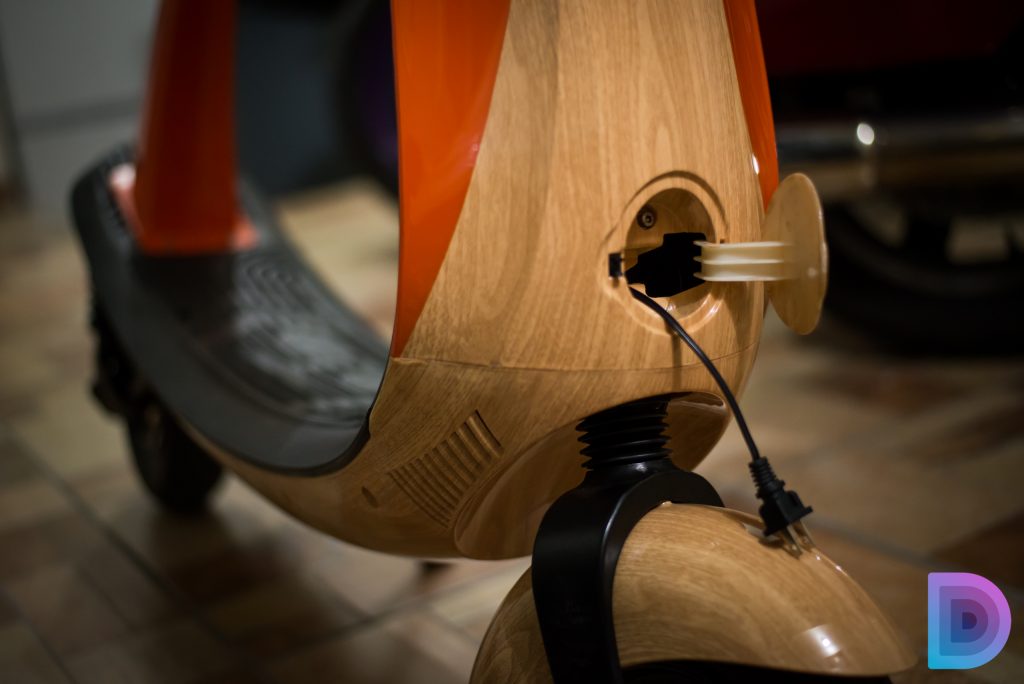
Juicing up takes about seven hours when empty. You can’t just speed through charges between trips. So if you are going nearly 25 miles one way on it, plan on charging it for a while before returning.
I did ride it quite a bit, though. I went to a cafe eight miles away quite often. Then I’d charge it while I worked and come back home with juice to spare. Trips to the local store were a breeze, and when I first got it, I rode around the neighborhood for an hour non-stop.
Ride or die?
The Ford Ojo commuter scooter is one interesting ride with a very specific market in mind. It won’t meet everyone’s needs. Furthermore, the price is up there with gas-powered scooters (take a look at the Yamaha Vino Classic). The Ford Ojo base model costs $2199.99, while the vintage version (the one we tested) will set you back $2399.99. This makes it a bit hard to justify buying a Ford Ojo, but it might find a good spot in your garage if your needs aren’t too demanding. Or if your desire for it very high.

So, what does the Ford Ojo have to offer? You won’t need a motorcycle license, it has no emissions, is bike-lane friendly, and its design features rival gas vehicles. Take away the dangers, learning curve, and inconveniences of a motorcycle and you pretty much end up with a Ford Ojo.
I see this product as an addition to your transportation needs, not a replacement to your main form of transportation. This is because it is not portable enough, nor does it have the range to transport you all that far on its own.
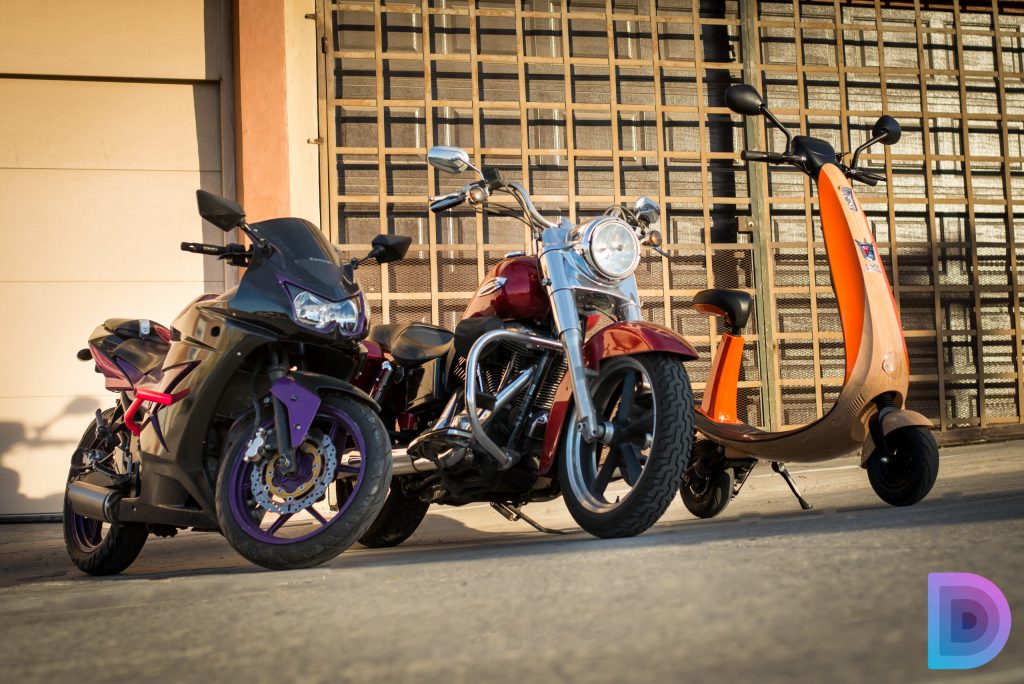
This scooter is mostly made for people who have everything they need relatively close by. City dwellers, students, and local shoppers will also find it very enticing. I found that I definitely couldn’t live on it alone. I needed my motorcycle and car for the usual longer trips and highway commutes.
The Ford Ojo may still seem very much like an expensive toy for grown-ups. It is an awesome toy, though! If you have the extra $2,000 and change for a local vehicle, or everywhere you go is close by, the Ford Ojo will do the trick very nicely. In fact, it will make you the cool kid on the block. It definitely did for me!